#Buddhist Cremation
Text
Are you seeking an Indian Funeral Service in Wandsworth? Welcome to Asian Funeral Services. With a wealth of experience and expertise in this service, we ensure excellent Indian Funeral Services. We understand the client’s concern and their sentiment. For more information, you can call us at 020 8909 3737 or 07737 051232.
#Asian Funerals in Wimbledon#Asian Funeral Services#Hindu Funeral Wandsworth#Tamil Funeral Service London#Indian Funeral Service in Wandsworth#Tamil funeral directors Uxbridge#Tamil funeral services in Wimbledon#Hindu Funeral Tooting#Tamil funeral services in Kingston#Tamil funeral services in Merton Park#Tamil Funeral Service Kenton#Tamil funeral services in Mitcham#Hindu Funeral in South London#Om funeralservices#Tamil funeral services in Morden#Tamil funeral services in Streatham#Tamil funeral services in Croydon#Indian Cremation Services South London#Islamic Burial London prices#Tamil funeral services in Sutton#Asian Funeral Service London#Tamil Funeral in Tooting#Hindu Funeral Service London#Hindu Funeral Directors near me#Indian funeral directors near me#Nepalese funeral services#Buddhist Cremation Service#Buddhist Cremation#Jain funeral service Borehamwood#Swaminarayan funeral services
0 notes
Text
In diverse cultures from India to Tibet, living relatives perform intricate rituals to aid the dead in their spiritual journey, reflecting a shared belief in the importance of guiding souls into the afterlife.
15 notes
·
View notes
Text
From India and Taiwan to Tibet, the Living Assist the Dead in their Passage | Ancient Origins
From India and Taiwan to Tibet, the Living Assist the Dead in their Passage.
https://www.ancient-origins.net/history-ancient-traditions/death-rites-0019771

View On WordPress
#1500 BC#Ancient Greece#Bardo Thodol#Buddhist#China#Cremation#Ganges River#Hindu#India#Karma#River Styx#Taiwan#The Tibetan Book of the Dead#Tibet#Tibetan Buddhism#Varanasi#Vedic#Zoroastrians
0 notes
Photo

Funeral Home Arrangement Services Portland, OR | Riverview Abbey Funeral Home
We are dedicated to providing families with personal assistance in their time of need and delivering dignified Funeral Home Arrangement in Portland, OR.
#buddhist funeral home portland#christian funeral home portland#Portland cremation service#Portland funeral homes#memorial services Portland
0 notes
Photo

Rare Souvenir T Shirt for Cremation Memorial of Phra Phrommangkalajarn or Pan Pathumuttaro, Thai monk, Buddhist Monk t shirt #Phrommangkalajarn #monk #memorial #buddhist #cremation #phra #Souvenir #tshirtdesign #tshirt #shirt #vintagetshirt https://www.instagram.com/p/Cdap9nyvXon/?igshid=NGJjMDIxMWI=
#phrommangkalajarn#monk#memorial#buddhist#cremation#phra#souvenir#tshirtdesign#tshirt#shirt#vintagetshirt
0 notes
Text

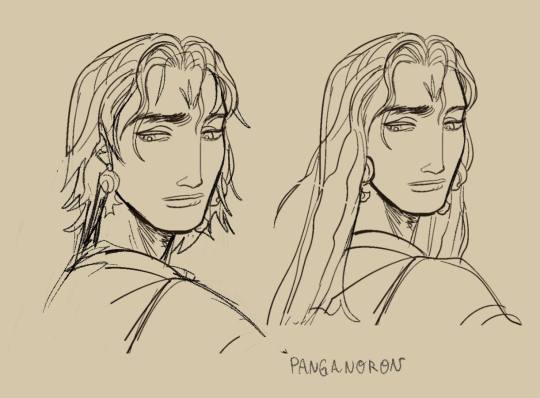

My friend asked me to draw them on their wedding day (bc I drew Chintan and Jamil).
Some oc ranting for my own comfort.. Their names are Lihay and Panganoron. In my wip, there is a dominion called Sasaban.. and its in danger of occupation by its neighbor (called Janalila, which is a rajahnate and extremely powerful.). Sasaban's population is mostly coded Muslim.. and it is a sultanate- Panganoron is the heir, their crown prince under a regent, and he is mostly shunned by his people. Mainly because he follows a different religion from his state religion (like imagine if the sultan of Brunei's son was a Buddhist.) . And Panganoron is seen as "weak".. he is very gentle, soft-spoken, academia inclined rather than cunning and war-like as the rest of his predecessors. (His father followed the state religion, his mother was indigenous). Panganoron is keen on proving himself worthy of being sultan, but he had a tendency of being distracted by socioeconomics rather than warding off forces and marching off into the battlefronts- Panganoron built soup kitchens and schools rather than amassing armies, and he is staunchly anti war and anti caste systems- but because of the looming occupation, Panganoron has no real power or resources to challenge the harmful pre-existing hierarchies in Sasaban. Anyways. Panganoron was offered a way out of war with the neighboring country of Janalila, if he married a princess from a different dominion- a theocracy called Kalantiaw, the oldest and the most noble dominion in their world; The princess' name was Maitreyi. If he married her, not even Janalila would dare make enemies of Sasaban and Kalantiaw both.
Panganoron was game, but since all the borders and ports were tightly guarded, Panganoron would have to make his way to Kalantiaw in disguise, with a skeleton crew, and through old , forgotten passageways, and roads that are called "witherways", magical, and only existing within certain, precisely calculated timeframes, of which only certain groups of indigenous people could do.
Lihay is. Well. He is an "uripon"- the lowest of the low in their social classes- indentured to servitude for the rest of his life, very sick from working in the mines.. in my world building, primordial dragons were so large, their hollowed out bones were mined for thousands and thousands of years for coal that burned for decades, so hot it could cremate a cadaver in minutes- working in such mines was very dangerous- guaranteed anyone who spent more than a couple of hours in it would suffer a tamer version of radiation poisoning- but many miners become disfigured, with their skin melting and rotting. Sasaban deals with this by only making lepers and the lowliest uripon mine- Lihay had lived all his life in the dragon-mines, but he was also indigenous- and he knew his way around the witherways.. so.
Lihay is very shy. He is trans, autistic and mute, and he has an enormous crush on Panganoron; Lihay agrees to be their guide, in exchange for his freedom from the mines, freedom from being an uripon, to a maharlika (freeman, I borrowed it from tagalog for my worldbuilding. In the real world, Timawa would be more appropriate)..
Either way. Lihay and Panganoron, traveling together with Panganoron's small entourage, fall in love, which is Very Bad for Panganoron, when the fate of his kingdom rely on him marrying Maitreyi of Kalantiaw- and Very Very Bad when the person he falls in love with is someone like Lihay.
Btw, Panganoron's name means "the clouds that gather at the mountaintop" in Tagalog. (And Bicol), while Lihay's name (Dalihayang) is from a made up language, and it means "twenty four.). But later, Panganoron gives him the name "Hininwon", which means "cherished one" ! ! :')
Ps ps.
Panganoron's eyes are supposed to look like wayang kulit akdksk


205 notes
·
View notes
Note
Hello! I was watching the Beijing Opera's Havoc in Heaven, and while I was admiring the beautiful stage makeup, I noticed that very distinct symbol on the Monkey King's forehead that looks like a swirly sunburst.
I was wondering if that symbol has any particular meaning, or if it's simply an aesthetic symbol that has come to be associated with the Monkey King through his opera makeup? I thought it might be neat to integrate it into my own design for Sun Wukong, but I'd rather not do so with a symbol I don't know the meaning and context of. I figured you'd be the best person to ask!

Chinese opera makeup is a big blind spot in my knowledge, so please take the following info as more of a suggestion than a fact.
A cursory search shows that some online sources refer to the flaming orb as a Fozhu (佛珠, "Buddha Jewel") and Shelizi (舍利子) or Sheli zhu (舍利珠, "Śarīra"). I'm assuming that Fozhu is a variation of the latter two.
These pearl-like beads figure among the bodily relics left over from the historical Buddha’s cremation (fig. 1). Strong (2004) explains:
[They are the result] of a process of metamorphosis brought on not only by the fire of cremation but also by the perfections of the saint (in this case the Buddha) whose body they represent (p. 12).

I also imagine that there is a connection to the Ruyi baozhu (Ch: 如意寶珠, “as-you-will treasure jewel”; Sk: Cintāmaṇi, “wish-fulfilling jewel”). Also known as “Dragon jewels” (longzhu, 龍珠), these luminous orbs are commonly held by Bodhisattvas in Buddhist art (fig. 2), thereby signifying their ability to grant any wish that a believer desires (Buswell & Lopez, 2014, p. 193).
It wouldn't surprise me if Wukong was depicted with a holy, wish-granting treasure due to his great power and association with Buddhism.

Sources:
Buswell, R. E., & Lopez, D. S. (2014). The Princeton Dictionary of Buddhism. Princeton, NJ: Princeton University Press.
Strong, J. S. (2004). Relics of the Buddha. Princeton, NJ: Princeton University Press
#Sun Wukong#Monkey King#Journey to the West#JTTW#Chinese opera#Chinese opera makeup#Opera makeup#Buddhism#Lego Monkie Kid#LMK
102 notes
·
View notes
Text
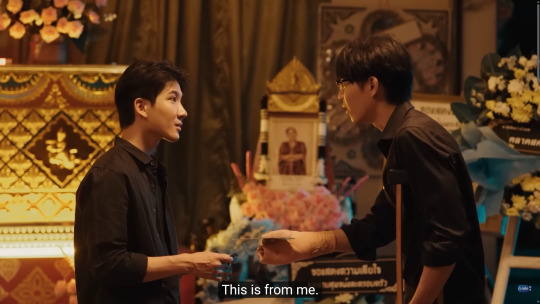
At the wake for Gaipa’s mum, Alan goes to pay his respect and hands Gaipa some condolence money, or ภาษีสังคม (pahsee sangkom), which refers to money given to people at weddings, funeral and religious occasions.
A small amount is placed inside the envelope, which is passed to a member of the deceased’s family.
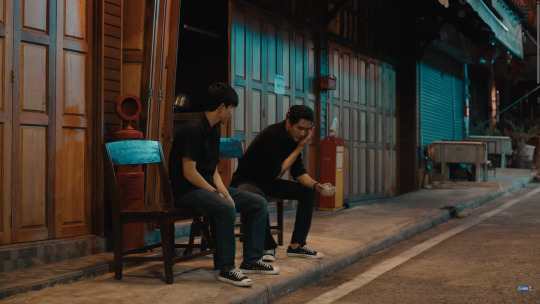

After returning from the wake, Jim and Li Ming pour some water on themselves. This seems to be related to the idea of using water, which is seen as cleansing, to rid oneself of bad luck, after attending a Buddhist wake or funeral.

Jim and Gaipa watch the smoke rise from the chimney, as Gaipa’s mum’s body is cremated, which is favoured by Buddhists, who believe that the soul of the deceased is released and can be reincarnated through cremation.
Source: http://www.speakrealthai.com/giving.html
Source: https://www.nirvanafugui.com/buddhist-funeral-etiquette/
Source: https://factsanddetails.com/southeast-asia/Thailand/sub5_8b/entry-3217.html
261 notes
·
View notes
Text
Traditional Symbolism in Jujutsu Kaisen Opening 4 - Specialz

[⚠️Warning: Possible small spoilers⚠️]
Hata-jirushi (旗印)
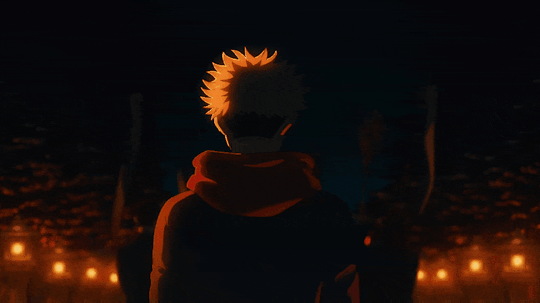

The white banners seen in the background of this scene are most likely Hata-jirushi (旗印). Hata-jirushi were the most commonly used war banners on medieval Japanese battlefields. The kanji used here “旗印” literally translates to “symbol flag”, “marker banner”, etc.… These war banners were generally simple streamers attached by a horizontal cross-piece to a shaft, unlike the later used nobori (幟) which were stiffened. Later, some hata-jirushi were hemmed on their sides and tops to better attach them to their poles in such a way that they were visible from the front. The purpose of these banners was to help identify and distinguish different army sections and regiments.
The use of them in this scene helps to set the tone of this arc which is essentially the start of a war between jujutsu sorcerers and cursed spirits.
Torii (鳥居)

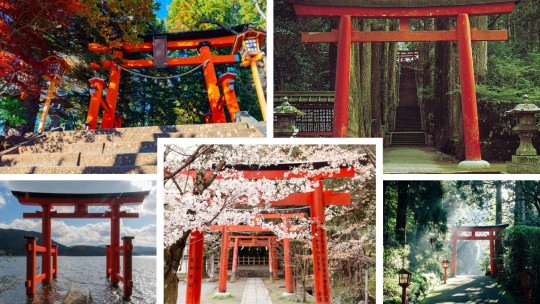
In this panel, several characters are seen passing through a torii (鳥居). A torii is a traditional Japanese gate mostly found at the entrance of and within Shinto shrines. Torii gates are where kami are thought to travel through and are welcomed to the shrine. It is customary to walk to the side of a torii gate when passing through instead of walking down the center—as it is believed that only kami may pass through the center. The word torii derives from the term “tōri-iru” (通り入る) which roughly translates to “pass through and enter”. These structures mark the transition between the mundane, secular world and the sacred grounds of the shrine. Thus, passing through a torii gate can be thought of as “crossing into another dimension or entering into spiritual communion with nature”. Torii gates act as both a physical barrier and spiritual guardian separating the profane from the sacred within its boundaries. Therefore, it is believed that those who pass through one, are cleansed of their worldly worries and enter a realm of tranquillity and peace. Aside from their religious significance, torii gates hold other more abstract meanings such as providing good fortune, hope, purity, and protection from evil spirits.
In this panel, as the characters pass underneath the torii it signifies their crossing from the physical to the spiritual world—which could refer to them traveling down the path to enlightenment or death. Since torii are also believed to provide good fortune and protection from evil spirits, the characters passing under one could be a sort of send-off ritual before the battle to ensure their safety.
Ōnusa (大幣)
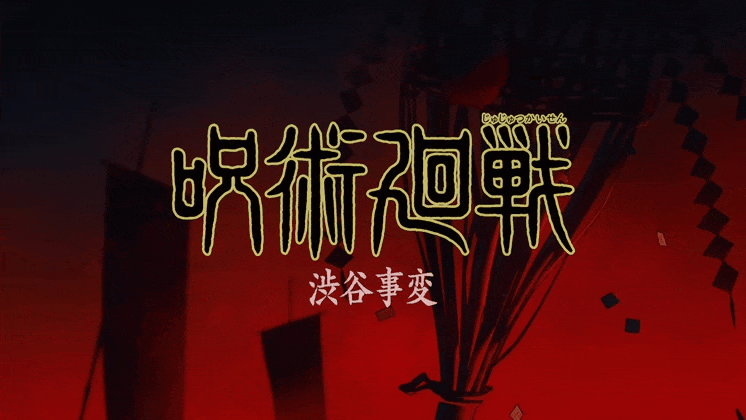
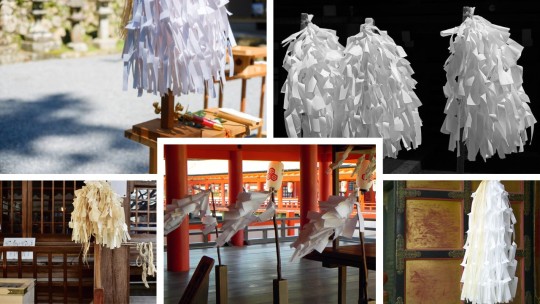
In addition to more hata-jirushi, we can see an ōnusa (大幣)—also known as a nusa (幣) or a Taima (大幣)—a wooden wand used in traditional Shinto purification rituals in this panel. Ōnusa are embellished with shide (paper streamers). The wand is also referred to as a (祓串) when the shide are connected to a hexagonal or octagonal staff. It is believed that impurities are transferred from the person or thing to be purified to the ōnusa by waving the ōnusa left, right, then left again.
The usage of them in this scene adds to the traditional imagery and the idea that something significant is about to happen that will require the characters to purify their minds and steel their resolve.
Nokotsudo (納骨堂)
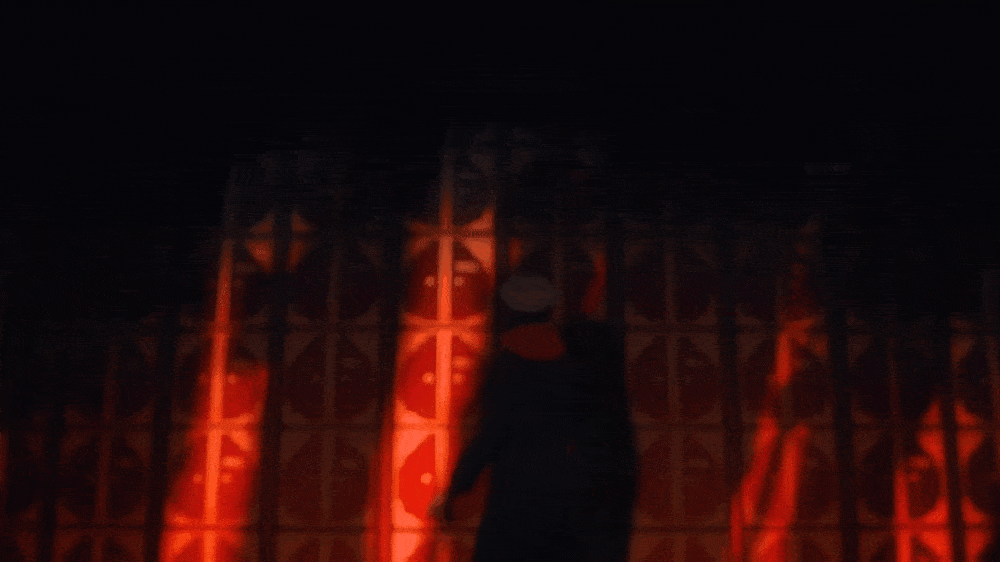
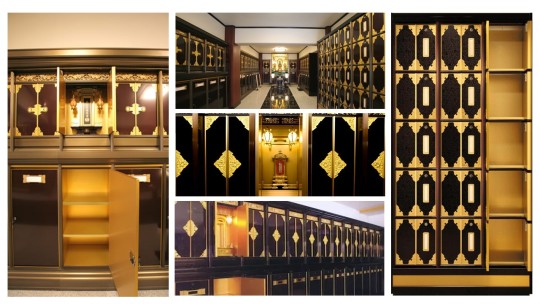
In this scene, Itadori is seen standing in front of a nokotsudo (納骨堂) which is a Japanese ossuary. A nokotsudo is known as a “nokotsuden” or “reido” and is a building in which the remains of cremation are kept. Nokotsudo are generally built in the precincts of temples and are equipped with lockers to keep the remains and are occasionally equipped with Buddhist altars above these lockers to place Buddhist mortuary tablets.
This scene portrays Itadori breaking down in front of a nokotsudo. This could either refer to him facing the ashes of the people Sukuna killed using his body—or perhaps more improbably the scene depicts him being confronted with the fact that his grandfather's wish has inadvertently led him down this troubled path.
Joss paper (金紙)
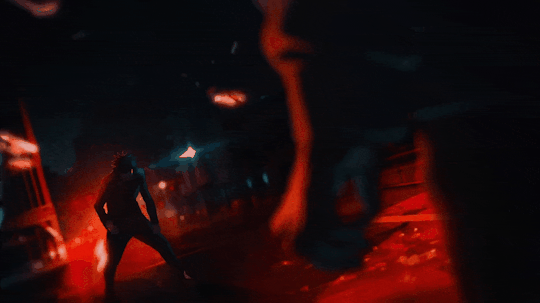
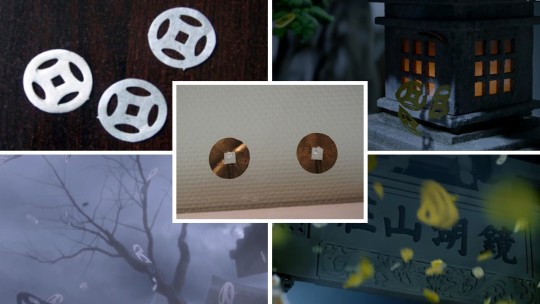
The rounded pieces of paper falling from the sky in this scene are likely pieces of joss paper (金紙). These are typically sheets of paper or papercrafts which are used as burnt offerings in ancestral worship as well as the veneration of deceased relatives on special holidays in Asia. Joss paper is typically printed with various representations of worldly goods such as money, houses, cars, credit cards, etc.… Joss paper is burnt at Asian funerals “to ensure that the deceased’s spirit has sufficient means in the afterlife”.
In wuxia and xianxia C-dramas, joss paper is often seen falling from the scene during scenes in which the reanimated and ghostly beings invade the world of the living—which is somewhat similar to the setting in this scene with Megumi meeting his reanimated father. Additionally, it was partly Toji's pursuit of money that led to his death, taking him away from his son, so it is somewhat ironic to have joss paper raining down on him.
[P.S. A few people have been analysing this opening on other platforms, but I wanted to touch on some of the more obscure cultural nuances... I am not Japanese, so this is based off of my own research, so I apologise if I miss anything or get anything wrong. Feel free to make corrections or additions in the comments and reblogs respectively.]
#jujutsu kaisen#jjk#jjk season 2#jjk s2#anime#anime openings#anime opening#jjk op4#jjk opening 4#specialz#king gnu#jujutsu kaisen shibuya arc#yuji itadori#itadori yuji#itadori yuuji#itadori yūji#jjk itadori#yuuji itadori#megumi fushiguro#fushiguro megumi#jjk fushiguro#jjk megumi#jjk yuuji#jjk yuji
91 notes
·
View notes
Note
I’ve been trying to look up information on Thai Buddhist funerals but all the English websites are vague or have little information. Do you have any information or websites you could recommend?
so obviously I'm not the authority on those, but I remember doing research on it back in the day + thai dramas are surprisingly realistic at portraying their culture, and even their funerals. funerals usually take either 3, 5 or 7 days. it has to be an odd day due to buddhist beliefs. there's is a water bathing ritual after death, and the body is then dressed and placed in a coffin in a temple where monks & the deceased loved ones will visit the deceased for the number of days they've chosen before the cremation. buddhist chants are of course involved, and the loved ones also pass cloth to the monks on behalf of the dead. usually a family gets a whole room for their loved one and stay with them and at least one person stays with them the whole day, greeting guests and taking care of them. finally, the body is cremated. all temples have a crematorium. some people can also actually wait 100 days after the death to cremate the deceased one (as can be seen in the lakorn chuamong tong mon.) the ashes are usually either stored in funeral chedis, which are small pointy towers present in all thai temples, or they can be stored in line around the temple if it has extra walls around it, where people will come to pray for their loved one. special merit-making also happens 7, 50 & 100 days after the person passed away. hope that helped!
xxx
29 notes
·
View notes
Text
Serenity in Transition: The Meaning and Symbolism of Buddhist Cremation

Parting can never be easy, especially when you must leave your dear ones on a journey to the next realm. In times of loss and transition, the rituals and traditions surrounding death bring solace and understanding. The realm of Buddhist traditions regards the transition from life to death as a profound journey. Read on to know the tradition of the Buddhist cremation.
Idea behind the concept
Central to this journey is the practice of Buddhist cremation that encompasses both the physical and spiritual aspects of the departure from the earthly abode.In the world of Buddhist funeral customs, you will uncover a serene and contemplative path that offers solace and understanding in the face of mortality.
The fundamental belief in impermanence, the knowledge that all things in life are transient and subject to change, lies at the heart of this tradition. Through cremation, the earthly shell turns into ashes returning to the elements it originated from. This transformation helps in embracing the concept of detachment from the physical form, recognizing that the essence of life transcends the material realm.
Symbolism
Symbolically, Buddhist cremation carries profound significance. The act of cremation symbolizes purification, releasing the deceased from the bonds of worldly attachments and allowing the spirit to continue its journey toward liberation. The brilliant, all-consuming fire signifies purification. As the flames consume the physical body, the individual's spiritual energy is believed to be liberated, transcending to a state of ultimate peace and enlightenment.
Rituals
The rituals surrounding Buddhist cremation are meticulously crafted to create an atmosphere of serenity and spiritual contemplation. In the ceremony, loved ones and Buddhist monks gather to pay their respects and offer prayers. The chanting of sacred mantras and sutras fills the air, creating an atmosphere of tranquility and devotion. The ashes resulting from the cremation process hold their own symbolism and are treated with the utmost respect. In many Buddhist traditions, the ashes are collected and placed in an urn which serves as the new home for the remains. It becomes the focal point for remembrance and contemplation for the dear ones
But beyond the symbolism and rituals, the cremation also reflects the principle of compassion. The act of cremation itself is seen as an act of mercy, releasing the deceased from the suffering and physical limitations of the body. It is an acknowledgment of the impermanence of life and a celebration of the spiritual journey ahead.
The practice of Buddhist cremation holds an important place within the rich tapestry of Buddhist funeral customs. It is a solemn and contemplative ritual that honors the impermanence of life and offers a serene path of transition. The symbolism and meaning behind Buddhist cremation invite us to reflect on the nature of existence, embrace the transformative power of change, and find solace in the spirit's eternal journey.
0 notes
Text

Over ten years ago, one of my disciples in Vietnam had a stupa - a Buddhist shrine - built for my ashes. I told her that I didn’t need a stupa for my ashes. I don’t want to be stuck in a stupa. I want to be everywhere.
“But," she protested, “it’s already built!"
“In that case," I said, “you’ll have to put an inscription on the front, saying, ‘I am not in here.’" It’s true. I won’t be there in the stupa. Even if my body is cremated and the ashes are put in there, they aren’t me. I won’t be in there. Why would I want to be in there when outside it is so beautiful?
But in case some people misunderstand, I told her they might need to add another inscription, saying, “I am not out there either." People won’t find me inside or outside the stupa. Yet they may still misunderstand. So there may need to be a third inscription that reads, “If I am to be found anywhere, it is in your peaceful way of breathing and walking." That is my continuation. Even though we may never have met in person, if, when you breathe in, you find peace in your breathing, I am there with you.
- Thich Nhat Hanh, in “The Art of Living".
46 notes
·
View notes
Text

09 - Hatsadiling
Hatsadiling is a mythical bird commonly featured in Northern Thai art. The creature is considered to be the size of a house, with the head and body of a lion, trunk and tusks of an elephant, the comb of a cock, and the wings of a bird. According to an oral myth in northeastern Thailand, the bird once inhabited the legendary forest of Himavanta. The bird is often featured as a motif on funerary hearses of prominent Buddhist monks in Northern Thailand during phongyibyan cremation ceremonies. The hatsadiling has also been used by the Marma people as a primary motif for funerary hearses.
#inktober2023#my works#inktober#directly from the english wiki#-#SCANNER GET#just in time for my favourite one so far#very pleased with the colors and shapes in this one#will scan and update the previous ones this evening
38 notes
·
View notes
Photo

We are dedicated to providing families with personal assistance in their time of need and delivering dignified funeral services. We serve families of all faiths and cultures with funeral home near me and memorial needs.
0 notes
Note
Can you please make scenarios where the S/O has the the same abilities as Quan Chi, but hates it and even though it's hard to control it, Kung Lao, Fujin, and kotal Kahn try to help control it.
MK Lads x Reader with Quan Chi's powers
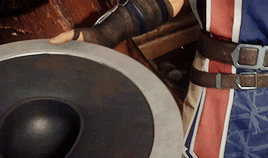
Kung Lao
Alright, Quan Chi is a necromancer, right? To Lao, the solution seems obvious, just keep you away from graveyards, and no more unintentional zombies. Simple!
Poor Lao had failed to consider that dead people aren't just found in graveyards or cemeteries. Over the course of time, bodies kind of end up everywhere. It was alarming when you woke up to find the upper half of a dead raccoon trying to climb through your window.
To help keep you calm, Lao takes you to the Shaolin Temple. He reassures you that Buddhists cremate their dead and that there are no physical bodies to accidentally resurrect. He had, of course, completely forgotten about the mummified monks, whose bodies are kept on display to inspire dedication in worship.
Thankfully those guys were already in glass boxes so they couldn't actually get to you. But you two are now banned from coming back until you can actually control your powers.
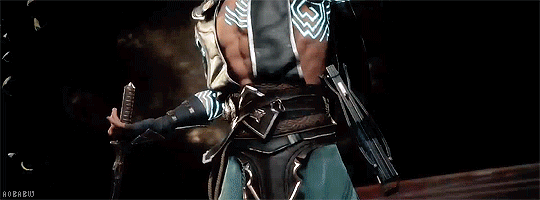
Fujin
Rather than trying to avoid the negative side effects of your abilities, Fujin believes the best way to gain control is by confronting the magical energies swirling within you directly.
He begins by having you meditate with him at the Sky Temple, hoping the cool air and high altitude would help soothe your nerves.
He asks that you practice channeling your resurrection powers into the small, dead flower in front of you, that had not been watered in several weeks. At first, you are hesitant, too scared to let yourself tap into that aspect of yourself.
Fujin grasps your hand softly, grounding you, promising you that no matter what happens, he will be there for you. You exhale deeply, imagining the flower blooming and full of life as the energy leaves you. When you open your eyes, the flower stands tall with its petals shining in the sunlight. Fujin smiles at you warmly, you're one step closer to controlling your fears.

Kotal Kahn
Initially, Kotal is interested in how similar your powers are to Quan Chi. Oh, they're exactly the same? And you're upset that you cannot control your powers? Well, then. It only makes sense that Kotal finds the most experienced teacher to guide you.
When you are summoned to the Kahn's throne room, you see Quan Chi seething and kneeling, bound in manacles at Kotal's feet. Kotal looks at you with a proud smile, and he states that Quan Chi has been captured for his crimes against Outworld. The necromancer had two choices: be executed, or, teach you how to control your powers and be set free.
At first, learning from Quan Chi scared you more than your powers did, but Kotal assures you that Quan Chi will be under constant supervision. Quan Chi looks absolutely humiliated when it comes time for your first lesson, he has you practice throwing an energy ball at a target.
When Quan Chi sees how inexperienced you are, he mocks you for your weakness. From the balcony overhead, Kotal snaps his fingers. At the signal, a guard cracks a whip into Quan Chi's back, knocking him to the floor in pain. You look up at Kotal who gazes at you lovingly. Quan Chi will teach you how to control your powers, Kotal won't give him a choice.
#mortal kombat#mortal kombat x reader#mortal kombat headcanons#mk x reader#kung lao#kung lao x reader#fujin#fujin x reader#kotal kahn#kotal kahn x reader#quan chi#qdbs writing
215 notes
·
View notes
Text


Yesterday an active-duty Air Force soldier named Aaron Bushnell self-immolated in front of the Israeli Embassy. His last words were “Free Palestine.” Of the cops responding to the scene, some pointed guns at him while others sought to extinguish the flames; the image of a cop pointing a gun at a man on fire is the most American thing I have ever seen.
On June 11th, 1963, a Buddhist monk named Thích Quảng Đức set himself on fire in Ho Chi Minh City (then Saigon). In South Vietnam, Buddhists were an oppressed majority, ruled by a Catholic minority—the Buddhist flag was banned, Catholics were chosen for all the better jobs, and protesting Buddhists were being murdered in the streets or sent to concentration camps.
So Thích set himself on fire and calmly burned in front of hundreds of spectators on a public street. There’s a film of it, and I’m not big into “watch people die on film,” but some moments in history are worth seeing. He didn’t cry out; he just sat in lotus position, engulfed in flames. Afterwards, the cops tried to take his remains, but thousands of angry protestors took him back, and they re-cremated him for a proper funeral. His heart didn’t burn. It solidified in the fire. Today it is today a sacred relic. I have no explanation for this.
Other monks in Vietnam followed his example. By the end of the year, the CIA led a coup and toppled the Catholic dictator of the country. This isn’t “the US being good,” mind you, they’d been propping the asshole up in the first place. Thích’s sacrifice is often credited as what brought down that regime.
Two years later, the first American set herself on fire in protest of the Vietnam war. Alice Herz was a German Jew, 82 years old. She’d seen some shit. She’d fought for feminism in 1910s Germany, helped bring about the Weimar Republic, fled Germany to France only to end up in a Nazi concentration camp. Survived. Made it to the US. Lived in Detroit and became a Unitarian. Then one day she wrote a letter about how horrible the Vietnam war was, went out to the street, and set herself on fire. She wasn’t the last. In South Vietnam and the US alike, Buddhists and Quakers and Catholics set themselves on fire in service of the same cause.
When a 16 year old Catholic named Ronald Brazee set himself on fire in October 1967, a Catholic Worker named Father Daniel Berrigan wrote a poem for him called “In the Land of Burning Children”
He was still living a month later
I was able to gain access to him
I smelled the odor
Of burning flesh
And I understood anew
What I had seen in North Vietnam
I felt that my senses
Had been invaded in a new way
I now understood
the power of death in the modern world
I knew I must speak and act
against death
because this boy’s death
was being multiplied
a thousandfold
The Dutch resistance to the Nazi Occupation was characterized by a unique nonviolence, focusing primarily on hiding Jewish people and acts of sabotage. This wasn’t necessarily an ethical or even strategic decision, but one forced onto them by circumstance—according to one resistance fighter, since the Dutch government maintained a firearms registry before the invasion, the Nazis were able to acquire that list and go door-to-door to disarm the Dutch population.
But what the Dutch resistance lacked in firearms it made up for in mass participation. Roughly a million people were involved in sheltering people, secreting people away, striking, or helping those who were doing such things. The two most active groups were churches and communist organizations.
The Nazis responded with collective punishment. The occupiers cut off food supplies inside the Netherlands, blockading the roads between farms and cities. The entire population of the country went hungry during what’s called the Hunger Winter of 1944-1945. Between 18-22,000 people starved to death. Four-and-a-half million people were living off of something like 600 calories a day each. A whole generation of children born or living at the time suffered lifelong ailments. Audrey Hepburn grew up in Occupied Netherlands (and as a preteen performed ballet to raise money to support the resistance). Her time in the hunger winter left her with lifelong ailments like anemia.
In case the parallel I’m drawing is not obvious, Gaza is currently being starved by the Israeli government.
Quite notably, quite worth understanding in the modern context, the Hunger Winter persisted despite relief efforts until the Allied forces liberated the Netherlands from the fascists in May 1945.
Aaron Bushnell was twenty-five years old when he died. He sent a message to media outlets before his act: “Today, I am planning to engage in an extreme act of protest against the genocide of the Palestinian people.”
He posted on Facebook: “Many of us like to ask ourselves, ‘What would I do if I was alive during slavery? Or the Jim Crow South? Or apartheid? What would I do if my country was committing genocide?’ The answer is, you’re doing it. Right now.”
His last words, engulfed in flames, were “Free Palestine.”
I know that what stopped US involvement in Vietnam was the military victory of the Vietnamese people against US forces, combined with the direct action action efforts of the American Left that made the war harder to execute. I know what ended the Nazi occupation was the Allied invasion. I know what stopped legal chattel slavery in the US was the deadliest war in our country’s history. I also know that what stopped Jim Crow was… nothing. Nothing has stopped it, not completely. The long, hard, thankless work of a combination of reform and direct action has mitigated its effects somewhat.
I can’t say I think others should follow Aaron’s example. I doubt he wanted anyone to. An act like this needs attention, not imitation. What we can follow is the moral courage. What we need to decide for ourselves is how to act, not whether or not to act. I don’t have any answers for me, and I don’t have any answers for you.
I can say that he shouldn’t be forgotten, that he ought to be remembered when we ask ourselves if we have the courage to act.
I can also say that it takes an incredible number of people doing an incredible variety of work to effect change. That poet, Father Daniel Berrigan, did a lot more than write poetry. He and others in the broader Catholic Left raided draft offices and burned records, directly impacting the US’s ability to send young men off to die in an imperialist war. A group of people who came out of their movement (but were primarily Jewish and/or secular) raided an FBI office and uncovered the spying and disruption that was done of the peace movement under the name COINTELPRO.
A vibrant and militant counterculture sprang up, drawing Americans away from the clutches of conservative propaganda. They built nationwide networks of mutual aid and they helped draft dodgers escape the country.
An awful lot of American soldiers in Vietnam directly defected, enough that “fragging” entered the English language as a verb for throwing a grenade at your commanding officer.
As for the Hunger Winter, it was not ended until the Nazi party was ended through force of arms, but its worst effects were alleviated by the bravery and thankless work of uncountable people who cobbled together meals from nothing or who organized to bring food aid in across German lines.
In the US now we’re seeing a growing movement opposed to our country’s collaboration with the genocidal regime in Israel.
It’s impossible to know if it will be enough. When you pile straw onto the proverbial camel, you never know which straw will be the last. We just keep piling.
And in the meantime, we remember names like Aaron Bushnell, Ronald Brazee, Alice Herz, and Thích Quảng Đức.
#gaza#palestine#aaron bushnell#self immolation#child death#tw#death#military#protest#self harm#margaret killjoy#community building#practical anarchy#practical anarchism#anarchist society#practical#revolution#anarchism#daily posts#communism#anti capitalist#anti capitalism#late stage capitalism#organization#grassroots#grass roots#anarchists#libraries#leftism#social issues
7 notes
·
View notes